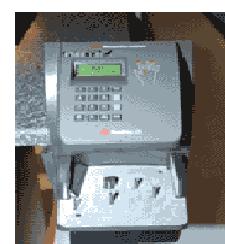The following paper on Microcontroller Projects on Hamming-Cut-Matching Algorithm in Iris Recognition defines what iris is-its location, importance and how to recognize it. It also explains how the scanned pattern of iris is matched by transforming into 256 bytes for easy storage and retrieval from the database. Further this paper throws light on realization of HAMMING-CUT-MATCHING algorithm which is effective in decreasing the time taken to match the scanned pattern with database where massive databases are in place.
 The software employed for iris-identification uses around 256 reference points and begins to look through the data for a match. Every single separate iris pattern is demodulated so as to obtain phase information and then leading to phase quantization and allocation of 256 bytes for every iris pattern. Consequently a single iris pattern is transformed into phasor bits and stored in the software and deployed for comparison later.
The software employed for iris-identification uses around 256 reference points and begins to look through the data for a match. Every single separate iris pattern is demodulated so as to obtain phase information and then leading to phase quantization and allocation of 256 bytes for every iris pattern. Consequently a single iris pattern is transformed into phasor bits and stored in the software and deployed for comparison later.
When an image is scanned and used to contrast with the database, the value of hamming distance is required. Hamming distance is used to determine the difference of bits between the iris code of the scanned image with that of the iris code records in the database. This processing is very quick and just takes a few seconds time. The final result produces two-digit code specifying how much the codes vary.
Conclusion:
Hamming-Cut-Matching algorithm in Iris recognition stands out because it offers high security and absolute accuracy plus with an ease in administrative duties. It abolishes the need for passwords, PIN etc as they more risk prone. It’s another specialty is its uniqueness with respect to every individual. The iris recognition scheme is not limited as age increases. From the age of seven till the course of a man’s life it remains unchanged. Moreover, scanning of iris does not cause any damage to the eyes of the person.
Download Microcontroller Projects on Hamming-Cut-Matching Algorithm in Iris Recognition.
